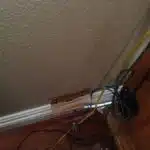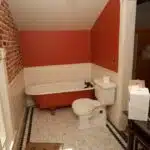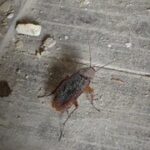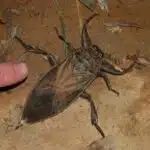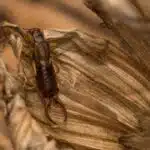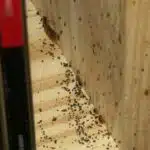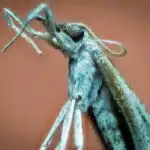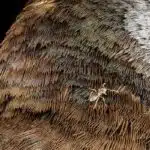As a pest control expert, I have encountered countless situations where homeowners have been plagued by the presence of mice in their attics. Mice can cause significant damage to your home’s insulation, wiring, and structure, while also posing health risks due to their droppings and urine. Therefore, it is essential to take swift action if you suspect the presence of mice in your attic.
Getting rid of mice in your attic requires a multi-step approach that targets both the rodents themselves and any entry points they may be using to gain access. In this article, we will explore the most effective methods for eliminating mice from your attic and preventing future infestations. By following these steps, you can ensure that your home remains safe and free from unwanted guests.
Identifying The Signs Of A Mouse Infestation
Mouse infestations are a common problem in many households, and it’s important to identify the signs of an infestation as early as possible. One of the most common misconceptions is that mice are only active at night. However, this is not true as they can be active during the day or night. Therefore, if you notice any signs of mice during daylight hours, it’s important to take action immediately.
One early detection method for a mouse infestation is to look for droppings. Mice produce droppings that are small and black, and they can often be found near food sources or in areas where they have been active. Another sign of an infestation is gnaw marks on wood or other materials. Mice will gnaw on anything to keep their teeth sharp, so if you notice any chewed items in your attic, it may be a sign of an infestation.
It’s also important to listen for any unusual sounds coming from your attic. If you hear scratching or scurrying noises, it could indicate the presence of mice. Additionally, if you notice any foul odors in your attic or home, it could mean that there are dead mice present. Identifying these signs early on can help prevent a full-blown infestation and reduce the risk of health hazards associated with mouse droppings and urine.
Understanding the risks of a mouse infestation is crucial for protecting your home and family from potential health hazards.
Understanding The Risks Of A Mouse Infestation
A mouse infestation, if left unchecked, can pose serious health and safety risks to you and your family. Mice are carriers of various diseases that can be transmitted through their urine, feces, and saliva. Among these diseases are Hantavirus, Salmonella, and Lymphocytic Choriomeningitis (LCM). Children and elderly individuals are particularly vulnerable to these diseases.
Immediate action is necessary upon discovering signs of a mouse infestation in your attic. Failure to act promptly can result in extensive property damage as well as increased health hazards. Mice have a tendency to chew on electrical wires which can lead to fires in your home. Furthermore, mice droppings and urine can cause respiratory problems especially when inhaled by individuals with weak immune systems.
To prevent the risks associated with a mouse infestation, here are important steps that you need to take:
- Inspect your attic for signs of mice such as droppings, gnawed materials or nests.
- Seal all possible entry points where mice might gain access into your attic.
- Hire professional pest control services to eliminate the mice from your attic.
Understanding the risks of a mouse infestation is crucial in ensuring the safety and well-being of your household. Immediate action must be taken upon discovery of any signs of an infestation. In the next section, we will discuss how to assess the extent of the problem before implementing measures to get rid of mice in your attic.
Assessing The Extent Of The Problem
Assuming that mice have been sighted in your attic, it is important to assess the extent of the problem before taking any action. Conducting a thorough assessment will help you determine how many mice are present, where they are located, and what damage they have caused. This information is essential in developing an effective plan for eradication.
To accurately assess the extent of the problem, start by inspecting your attic thoroughly. Look for signs of mice such as droppings, gnaw marks on wood surfaces or wires, and shredded insulation. You may also hear scratching or scurrying noises during your inspection. It is important to wear protective gear such as gloves and a mask during this process to avoid exposure to harmful contaminants.
Safety precautions during assessment cannot be overstated because mouse infestations can pose serious health risks. Mice carry diseases such as salmonella and hantavirus which can be transmitted through their droppings and urine. Therefore, it is recommended that you seek professional assistance if you are uncomfortable with conducting an assessment on your own.
Transition: After assessing the extent of the problem and ensuring safety measures are taken, the next step involves blocking entry points to your attic.
Blocking Entry Points To Your Attic
Preventive measures are the most effective way of preventing mice from entering your attic. It is essential to inspect the exterior of your home, especially the roof and vents, to identify potential entry points. Ensure that no trees or shrubs touch the roof as they can provide a bridge for rodents to enter. Keep all garbage and compost away from your home, and seal them securely.
DIY solutions such as sealing gaps around windows, doors, and utility lines with caulk or foam insulation can help prevent mice from entering your attic. Mice can fit through openings as small as a dime, so it’s essential to cover even the smallest holes. Use steel wool or copper mesh to fill larger gaps as mice cannot chew through these materials easily.
It’s important to note that while preventive measures and DIY solutions may work in some cases, professional help may be necessary if you have a severe infestation. In the next section, we will discuss how to seal cracks and holes in your attic effectively to prevent mice from entering.
Sealing Cracks And Holes In Your Attic
As an attic is often the most neglected area of a house, it can become an ideal hiding place for mice. To prevent them from entering your home, you need to seal all the cracks and holes in your attic. This will not only keep rodents out but also improve insulation and energy efficiency.
There are various types of sealants available in the market such as silicone caulk, expanding foam, and weatherstripping. Before using any sealant, carefully inspect the entire attic area and identify any possible entry points for mice. It is important to choose the right type of sealant for each specific crack or hole. For instance, silicone caulk is best suited for small gaps while expanding foam is better for larger crevices.
DIY sealing techniques can be time-consuming but effective in preventing mice from entering your attic. Make sure to wear protective clothing before starting to work on sealing cracks and holes. Be thorough in covering all potential entry points with sealant materials. However, if you are not confident that you have identified all possible openings or if you lack DIY skills, it may be necessary to hire a professional pest control service provider.
When it comes to sealing cracks and holes in your attic, timing is crucial. The best time to do this task is during late summer or early fall when mice are looking for a warm place to spend winter months. If you wait until after winter has arrived, then it may be too late as the mice would have already entered your home. In case you find evidence of mouse infestation inside your attic despite sealing all possible entry points, consider hiring a professional pest control service provider before proceeding with traps or baits to catch them.
Transitioning into the subsequent section about ‘using traps to catch mice’, it is important to note that even though sealing all cracks and holes is essential in keeping mice out of your attic, there may still be a few that make their way inside. In such cases, using traps can be an effective way to manage the infestation.
Using Traps To Catch Mice
As we have discussed, sealing cracks and holes in your attic is an essential step in preventing mice from entering your home. However, if you already have a mouse infestation in your attic, it’s time to take action. One of the most effective methods for getting rid of mice is by using traps. There are various types of traps available on the market, and choosing the right one can make all the difference.
When selecting a trap, it’s crucial to consider the type of bait that works best for mice in your area. Common baits include peanut butter, cheese, and chocolate. Peanut butter is often considered one of the most effective baits because it has an attractive scent that lures mice into the trap. Cheese is also a popular choice, but it might not be as effective as peanut butter or chocolate.
Proper trap placement is also important when dealing with a mouse infestation in your attic. Place traps along walls and near areas where you’ve noticed mouse activity. It’s also essential to ensure that traps are out of reach of pets and children to prevent any accidental injuries.
Now that we’ve covered how to choose the right type of bait and proper trap placement let’s move on to choosing the right type of trap for your situation. Different traps work better depending on factors such as infestation size and location. In our next section, we will discuss some common types of traps and their effectiveness in catching mice so that you can select the best option for your particular situation.
Choosing The Right Type Of Trap
When it comes to trapping mice in your attic, selecting the right type of trap is crucial. There are several types of traps that you can use, each with its own set of advantages and disadvantages. Understanding the different types of traps will help you choose the one that will work best for your situation.
One option is snap traps, which are perhaps the most popular type of trap. These traps are simple to use and inexpensive, making them a good choice for those on a budget. However, they do require regular checking and disposal of dead mice. Another option is glue traps, which work by trapping mice in a sticky substance. While these are effective at catching mice, they may not be suitable for those who prefer a humane approach to pest control.
Finally, electronic traps are another option for trapping mice in your attic. These devices use an electric shock to kill the mouse quickly and humanely. They also have the benefit of being reusable and easy to clean. However, they can be more expensive than traditional snap or glue traps.
When selecting a trap type, consider factors such as cost, effectiveness, and ease of use. Additionally, think about what kind of bait you will use to attract the mice to the trap.
Transition: Now that you have chosen the right type of trap for your situation let’s discuss how to effectively bait it to ensure success in capturing those pesky rodents.
Baiting Your Traps Effectively
- When it comes to baiting traps to get rid of mice in the attic, it is essential to select a bait that is attractive to mice.
- After selecting bait, it is important to properly position the traps to ensure that the mice can access it.
- Additionally, to ensure successful trapping, it is necessary to use lures to attract the mice to the bait.
- Generally, lures used for mice should be placed near the bait, though not directly on it.
- Mice are attracted to seeds and peanut butter, which are excellent bait options for traps.
- When setting the traps, it is important to ensure that the bait and lures are not visible from outside the trap, as this can easily scare away the mice.
Choosing Bait
When it comes to getting rid of mice in your attic, choosing the right bait for your traps is crucial. The type of bait you use can determine whether or not the mice will be attracted to the trap and caught. There are various types of bait that you can use, including peanut butter, cheese, bacon bits, and even chocolate.
Peanut butter is one of the most effective types of bait that you can use for mouse traps. It has a strong scent that mice find irresistible, and it’s sticky enough to stay on the trap without falling off. Cheese is also a popular choice for mouse traps since it has a pungent odor that rodents are drawn to. Bacon bits are another option as they have a strong smell that can lure mice out of hiding.
If you want to save some money on buying bait or prefer using natural alternatives, making homemade mouse bait is an excellent option. You can make homemade bait using ingredients like oats, peanut butter, sugar, and baking soda. Mix these ingredients together and place small amounts on your mouse traps for an effective DIY solution.
In conclusion, choosing the right bait for your mouse traps is essential if you want to effectively get rid of mice in your attic. Peanut butter, cheese, and bacon bits are all great options for commercial baits while homemade baits made from natural ingredients can also work well. By selecting the right type of bait and placing it strategically on your traps, you’ll increase your chances of catching those pesky rodents once and for all!
Properly Positioning Traps
When it comes to getting rid of mice in your attic, properly baiting traps is not the only thing to consider. Another crucial factor for catching these pesky rodents is the proper positioning of the traps. Placing traps in strategic locations can increase your chances of catching mice and prevent them from returning.
To properly position traps, start by identifying areas where mice are likely to travel or hide. Common areas include near food sources, along walls, and in corners. Once you have identified these areas, place your traps parallel to walls or along runways that mice frequently use. Avoid placing the trap in an area where it might be disturbed by people or pets.
Lastly, checking your traps regularly is essential for effective mouse control. Mice can decompose quickly after dying, which can cause unpleasant odors and attract other pests. Check your traps at least once a day and remove any dead mice immediately. This will also allow you to reset the trap with fresh bait and place it back in its optimal location for catching more rodents.
In summary, properly baiting traps is crucial for effective mouse control, but so is their proper positioning. Knowing where to place your traps can significantly increase your chances of catching mice and preventing future infestations. Remember to check your traps regularly as well to ensure they are still effective and remove any dead rodents promptly.
Luring Mice Into Traps
As a pest control expert, it’s important to know how to effectively bait your traps when trying to get rid of mice. But even if you have the most tempting bait available, if the traps are not placed in the right location, they won’t be effective. In this subtopic, we will discuss how to lure mice into traps by strategically placing them in areas where mice are likely to travel or hide.
There are different types of bait that you can use for mouse traps. Some common types include peanut butter, cheese, and chocolate. However, it’s important to note that not all baits work for every situation. For example, if there is an abundance of food in your attic, using a food-based bait may not be as effective as using a scent-based lure like cotton balls soaked in peppermint oil. Additionally, rotating between different types of bait can help prevent mice from becoming accustomed to one particular type.
When it comes to the placement of traps, it’s important to think like a mouse. Mice typically travel along walls and through corners since these areas provide cover and protection. Placing your trap parallel to the wall or near a corner can increase your chances of catching a mouse. It’s also essential to avoid placing traps in high-traffic areas where they might be disturbed or pose a risk to people or pets. By using the right type of bait and strategically placing your traps in key locations, you’ll increase your chances of luring mice into them and successfully getting rid of them from your attic.
Setting Up Multiple Traps For Maximum Effectiveness
Baiting your traps effectively is a crucial step in eliminating mice from your attic. However, it is not the only step you need to take. Strategic placement of the traps is equally important to maximize their effectiveness. You can place them along the walls, near the entry points or in areas with high mouse activity.
Moreover, bait rotation is an effective technique to keep mice interested in the traps. Mice are intelligent creatures and can quickly learn to avoid certain baits. Therefore, it’s essential to change the bait regularly to attract them towards the trap. Peanut butter, cheese, and chocolate are some of the most effective baits for mice.
Once you have caught a few mice, cleaning and resetting your traps becomes necessary. Dead mice left in your attic can cause foul odors and attract other pests like flies and maggots. Therefore, it’s crucial to remove them promptly and sanitize your attic thoroughly. In addition, resetting your traps ensures that they continue to catch more mice until they are completely eliminated from your attic.
Transition: Now that you know how to set up multiple traps for maximum effectiveness let’s move on to removing dead mice and sanitizing your attic space for a cleaner living environment.
Removing Dead Mice And Sanitizing Your Attic
After successfully trapping and removing live mice from your attic, you may still be faced with the task of removing any dead mice that were not caught in the process. It is important to handle dead mice with care, as they can pose health hazards if not properly disposed of. Before attempting to remove dead mice, it is recommended to wear gloves and a mask to avoid direct contact and inhalation of any bacteria or viruses that may be present.
Proper disposal of dead mice is crucial in preventing further health hazards. Place the dead mice in a sealable plastic bag and dispose of them in an outdoor garbage bin immediately. It is important to avoid touching any other surfaces or items during this process to prevent contamination. Once all dead mice have been removed, it is necessary to sanitize your attic thoroughly to eliminate any remaining bacteria and odors.
Sanitizing your attic involves cleaning all surfaces with a solution of bleach and water, including walls, floors, and insulation. This will kill any remaining bacteria or viruses left behind by the mice and eliminate any unpleasant odors. It is also recommended to use a vacuum cleaner equipped with a HEPA filter to remove any droppings or debris from hard-to-reach areas. Proper disposal and sanitization are essential steps towards creating a healthy living environment for you and your family.
To prevent future infestations, it is important to identify potential entry points that allowed the mice into your attic in the first place. Keep all food sources sealed and stored away properly, trim back trees or shrubs that may be providing easy access points for rodents, and seal up any cracks or holes around your home’s exterior. By taking these preventative measures, you can ensure a mouse-free living space for years to come.
Preventing Future Infestations
After successfully removing dead mice and sanitizing your attic, it’s important to take the necessary steps to prevent future infestations. This can be achieved by taking a proactive approach towards preventing re-entry of rodents into your home. The first step in this process involves sealing all possible entry points that may allow mice to enter your attic. These could include cracks, holes, or gaps in the walls, windows or door frames.
Long term maintenance of your attic will also play a critical role in keeping mice at bay. One way to achieve this is by investing in quality insulation material that is resistant to rodent damage. You should also ensure that any food sources are properly stored away from the attic and dispose of trash regularly. Regularly checking for signs of infestation such as droppings, gnaw marks or urine stains will help you detect any potential problems before they get out of hand.
Maintaining a clean and tidy attic is an essential aspect of preventing future rodent infestations. This includes regular cleaning, vacuuming and disinfecting surfaces to eliminate any potential breeding grounds for mice. Additionally, storing items in plastic containers instead of cardboard boxes will help reduce hiding places for rodents. By following these preventative measures, you can enjoy a pest-free home and a healthier living environment for you and your family.
Maintaining A Clean And Tidy Attic
Apart from dealing with mice infestations, it is essential to maintain a clean and organized attic. Often, clutter can build up in attics, making them an ideal environment for pests to thrive. Therefore, organizing clutter should be a priority to keep your attic free of pests. You can start by sorting through your belongings and getting rid of any items that you no longer use or need. This action will not only create more space but also reduce the chances of attracting mice.
Proper insulation is another aspect that contributes to maintaining a clean and tidy attic. It helps regulate temperature and moisture levels while keeping pests at bay. A well-insulated attic helps reduce energy bills as it keeps heat from escaping during the winter months and prevents hot air from entering during summer. Additionally, proper insulation can prevent water damage by reducing the amount of condensation that occurs in the attic.
Regular cleaning is crucial in ensuring that your attic remains free of pests such as mice. Keep dust, cobwebs, and debris at bay by sweeping regularly or using a vacuum cleaner. Ensure that all boxes are tightly sealed and stored off the ground level on shelves or racks to prevent moisture build-up. A clean environment discourages rodents from nesting in your space.
- Label boxes appropriately to help with organization
- Check for any cracks or holes in walls or roof which could provide access points for pests
- Consider using natural pest deterrents like peppermint oil or planting certain herbs like lavender around the entrance – Store food and garbage in sealed containers to prevent pests from being attracted to the area
Storing Food Properly
Maintaining a clean and tidy attic is crucial in preventing mice infestation. However, it is not the only measure that needs to be taken to keep mice away from your attic. Proper food storage and hygiene practices are equally important in deterring these pesky rodents from making a home in your attic.
Proper food storage involves keeping all food items in sealed containers or bags. Mice are attracted to the smell of food, so leaving any exposed or open food items in your attic will certainly attract them. It is also important to clean up any food spills immediately as they can leave behind an inviting scent for mice.
In addition to proper food storage, practicing good hygiene habits can also help deter mice from entering your attic. This includes regular cleaning and sweeping of the area, disposing of trash properly, and sealing any entry points where mice may enter through cracks or gaps. By following these simple measures, you can significantly reduce the likelihood of a mouse infestation in your attic.
| Food Storage Tips | Hygiene Practices |
|---|---|
| Store all food items in sealed containers or bags | Regularly clean and sweep the area |
| Dispose of trash properly | Seal any entry points where mice may enter |
| Clean up any food spills immediately |
By implementing proper food storage techniques and maintaining good hygiene practices, you can help prevent a mouse infestation in your attic. In the next section, we will discuss using natural repellents to further deter mice from making a home in your attic.
Using Natural Repellents To Deter Mice
- Natural repellents are a great alternative to chemical-based products, and offer many benefits to controlling mice in the attic such as being non-toxic and biodegradable.
- Common types of natural repellents include peppermint oil, cloves, garlic, and cayenne pepper.
- Peppermint oil is an effective mouse deterrent due to its strong smell which mice cannot stand.
- Cloves can be used to repel mice by placing them around the attic in strategic areas.
- To use garlic to repel mice, one can either crush the cloves and spread them around the attic or mix garlic with water and spray it around.
- Cayenne pepper is also an effective natural repellent, as mice are very sensitive to the smell of the spice.
Types Of Natural Repellents
Natural repellents are a great way to deter mice from your attic without using harmful chemicals. There are several types of natural repellents that you can use, including DIY recipes and commercial options. These repellents work by emitting scents or sounds that mice find unpleasant, which makes them avoid the area.
DIY recipes are a popular choice for those who prefer to use natural pest control methods. You can make your own repellent by using ingredients such as peppermint oil, vinegar, or cayenne pepper. Peppermint oil is particularly effective at repelling mice as they cannot stand its strong scent. To make a DIY peppermint oil spray, mix 10-15 drops of peppermint oil with water and spray it in areas where mice are likely to be present.
Commercial options are also available for those who want quick and easy solutions. These products come in different forms such as sprays, granules, and ultrasonic devices. One example of a commercial repellent is the Fresh Cab Botanical Rodent Repellent, which uses natural ingredients such as balsam fir oil and lavender to keep mice away. Ultrasonic devices emit high-frequency sound waves that are unpleasant for rodents but harmless to humans.
In conclusion, natural repellents offer an effective way to get rid of mice in your attic without using harmful chemicals. Whether you opt for DIY recipes or commercial options, these natural methods can help you keep your home rodent-free. With patience and persistence in applying these methods regularly, you can successfully deter mice from invading your living space.
Benefits Of Natural Repellents
Natural repellents are an excellent alternative to chemical-based pest control methods. They offer several benefits that make them a popular choice for homeowners who want to keep their living spaces free from pests without causing harm to the environment or their health. One of the main advantages of using natural repellents is that they are easy to make and use, especially when it comes to DIY natural repellent recipes. These recipes use common household ingredients such as peppermint oil, vinegar, and cayenne pepper, making them accessible and affordable for most people.
Another benefit of using natural repellents is that they are humane. Unlike traps or poison baits, which can cause suffering and death to rodents, natural repellents simply deter mice from entering your home without harming them. This is particularly important if you’re an animal lover or have pets at home since it ensures that no innocent animals are hurt in the process of getting rid of unwanted visitors.
Finally, using natural repellents can help prevent future infestations by creating an environment that is less attractive to rodents. By eliminating food sources, sealing entry points, and regularly applying natural repellents, you can discourage mice from making your attic their new home. This proactive approach not only saves you time and money in the long run but also promotes a healthier and safer living space for you and your family.
How To Use Natural Repellents
Using natural repellents is an effective way to deter mice from entering your home without causing harm to the environment or your health. One of the key advantages of natural repellents is that they are easy to make and use, especially with the availability of DIY repellent recipes. These recipes use common household ingredients such as peppermint oil, vinegar, and cayenne pepper, making them accessible and affordable for most people. However, it’s important to understand the pros and cons of using natural methods before attempting to apply them.
To use natural repellents effectively, you need to know where to place them. Mice are attracted to areas where food is readily available, so it’s essential to eliminate any potential food sources before applying the repellent. Once you’ve done that, you can start placing natural repellents in strategic locations such as near entry points or in areas where mice have been spotted previously. While using natural repellents can be a humane way of deterring mice from entering your home, it’s important to note that these methods may not offer a complete solution if you have a severe infestation.
Another factor to consider when using natural repellents is their longevity. Unlike chemical-based pest control methods, which can provide long-lasting protection against pests, natural repellents need regular reapplication for maximum effectiveness. Therefore, incorporating them into a routine maintenance schedule is crucial in preventing future infestations. When used correctly and consistently, natural repellents can be an excellent alternative to chemical-based pest control methods for homeowners who want a safe and environmentally friendly approach to mouse prevention.
Seeking Professional Help If Necessary
When it comes to getting rid of mice in your attic, many homeowners attempt to solve the problem on their own. However, if your DIY efforts have not worked and the infestation persists, it may be time to consider seeking professional help. There are both pros and cons to this option, so it is important to carefully weigh your decision.
One advantage of hiring a pest control expert is that they have the knowledge and tools necessary to effectively eliminate mice from your attic. They can also determine the root cause of the infestation and take steps to prevent future occurrences. However, there are also some potential drawbacks. Professional services can be costly, and not all companies will offer a guarantee for their work.
Cost considerations should be taken into account when deciding whether or not to seek professional help. Prices vary depending on factors such as the severity of the infestation and location of your home. It’s important to research different companies and compare prices before making a decision. Ultimately, if you value your time and want a long-term solution to your mouse problem, hiring a pest control expert may be worth the investment.
Conclusion
After identifying the signs of a mouse infestation, it is important to understand the risks associated with these unwanted guests. Mice can cause damage to your property and pose health hazards by carrying diseases and contaminating food. It is critical to assess the extent of the problem, block entry points, seal cracks and holes, maintain cleanliness in your attic, and store food properly. Natural repellents can also be used to deter mice from entering your attic.
Some may argue that seeking professional help for a mouse infestation is unnecessary as they believe they can handle the problem themselves. However, it is important to note that without proper expertise and equipment, attempts to eliminate mice can be ineffective and dangerous. Not only do professionals have access to effective pest control methods, but they are also trained on how to safely handle hazardous materials such as rodenticides.
By neglecting professional help, you risk further damage to your property and potential exposure to harmful substances. Protect yourself and your home by seeking assistance from qualified pest control experts who will ensure that any mouse infestations in your attic are thoroughly eradicated. Don’t let rodents take over your living spaces; act quickly before the problem escalates into a larger issue.
Image Credits
- “The Attic” by soupboy (featured)



